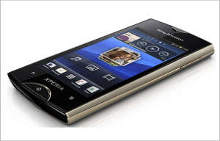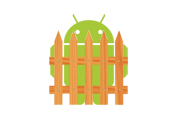CLEVELAND, Ohio -- Shockwaves swept through the tablet computer market this month as Google bought Motorola's mobile device business and Hewlett-Packard scrapped its TouchPad after less than two months on the market.
If you'd been considering buying an Apple iPad or another tablet, analysts say those two events could affect the types of products that will be available over the next few months and the prices you will pay.
Google says its purchase will let it improve the tablet market by allowing it to upgrade the software that runs tablets made by Motorola and other companies. But analysts said the bigger challenge will be price. Consumers have shown a voracious appetite for cheap tablets, something Apple and its competitors haven't yet produced.
Just wait, they said. Those products could be coming.
Tablet computer sales boom
Led by the iPad, tablets have become the fastest-growing segment of the computer market.
United Airlines is giving pilots tablets to replace bulky flight manuals. The Tampa Bay Buccaneers football team gave its players iPads for playbooks this year, according to the St. Petersburg Times. In Cleveland, Michael Symon's Lola restaurant uses iPads to show diners wine and beer options.
Rhoda Alexander, a tablet and monitor analyst with research company IHS iSuppli in Santa Clara, Calif., said restaurants that a few years ago would have used touch-screen cash registers are equipping waiters with tablets to take orders and process customer credit cards. Analysts estimate that Apple controls well over 80 percent of the tablet market with its iPad.
"We're seeing new uses for these devices every day," Alexander said. "The market is going to grow."
But no one knows how much the market will grow. Bob O'Donnell, an analyst for research company IDC in San Mateo, Calif., said the Google and HP decisions have changed many of the assumptions he and other analysts used in trying to predict how quickly the tablet market would grow.
"It's an enormous disruption. The table has been completely reset," O'Donnell said.
Google owns the Android operating system, the software that runs tablets made by Motorola, Samsung, Acer and several other computer companies. Android devices are distant No. 2 to Apple in the tablet market.
Google called its $15 billion purchase of Motorola's mobile device arm an opportunity to beef up Android. Analysts said Google now will be able to improve both the Android software and the Motorola Xoom tablet hardware, potentially improving the overall product.
Prices too high for many consumers
Michael Gartenberg, an analyst with Gartner Research, said consumers could benefit from Google's commitment to tablets. Creating real competition for the iPad means either offering more features for the same $500 that Apple charges for its tablet or finding ways to drastically lower prices.
So far, the lowest-cost Android tablet is a $400 Asus model. Analysts said it's a fine product, but it's not cheap enough to overcome Android's limitations - a clunkier interface than the Apple product, fewer programs available and fewer services such as music and movie downloads. Several companies have said their Android tablet sales were lower than expected.
Alexander said her group recently surveyed customers who had already purchased or who were considering buying iPads and similar devices.
She found that iPad owners selected the tablet because of its features and easy access to content from
Apple's iTunes music service and its AppStore software market. But people who were considering purchases weren't as impressed by those offerings.
"Price is hugely important to the people who planned to buy devices," Alexander said. The early adopters may have been willing to pay whatever Apple was charging, but the larger numbers of people on the sidelines are waiting for price cuts, she added.
Gartenberg said HP's recent actions have proven that point. Earlier this month, the company said it was canceling its TouchPad tablet after having launched it in July. The company slashed prices to $99 from $500, and stores started selling out nationwide. The fact that little software was available for the tablet or that the company was not going to be improving the product didn't scare away shoppers.
"It does show that when you sell a $500 device for $99, there's going to be a market for it," Gartenberg said. He added that the $99 price point was too low for any company to produce a tablet and make a profit, but it was a sign that demand for lower-cost tablets is huge.
O'Donnell said he expects some $250-$300 tablets to hit the market later this year. One producer that several analysts are watching is Amazon.com. Several technology experts expect the web retail giant to launch a more robust version of its Kindle eReader later this year, effectively making it a low-powered tablet running on Google's Android system.
"You're going to see some very aggressive price points this holiday season," O'Donnell said. "Apple isn't going to move. They don't have to, but everybody else is going to be aggressive."
Alexander called a potential Amazon tablet a game changer. Amazon already has services such as the Amazon Android App store that allows customers to buy software for tablets and smart phones and the Amazon Instant Video service that allows buyers to download movies and television programs. Making those available on a company- produced Android device could offer big competition to similar Apple services.
"They have the delivery systems" for entertainment services that Android currently lacks, she added.
More questions than answers
For all of the excitement around the recent developments, analysts were quick to say that it's too early to know how the market will respond to what's happened.
The quick selldown of HP's TouchPads could revive interest in that product's webOS software. O'Donnell said HP will sell about 1 million of the devices, enough that a competitor may be interested in buying the software from HP to launch future tablets. And having 1 million webOS users could lead more software designers to write programs for the device.
And Google faces a big competitive issue with its purchase. While the Motorola Xoom was one of the first Android tablets, it's not the best seller. That honor goes to the Samsung GalaxyTab.
By jumping into the tablet hardware market, Google is now competing with many of its best customers. If other tablet producers begin to feel that Google is saving its best innovations for its own tablets, they may look at webOS or another competing operating system for tablets.
Some reports, for example, suggest that Amazon could use HP's webOS for its tablet instead of Android. And Microsoft plans to launch a new operating system for mobile devices next year.
Alexander said all of those unanswered questions make it nearly impossible to predict if or when any of the competitors will be able to produce a viable alternative to the iPad.
"The problem for everybody at this point is the lead that Apple has," Alexander said. "You're going to get a more competitive horse race as more people get involved, but we don't know what the field's going to look like yet."


 The other new Sony phone is called Xperia Ray. Aimed more at style conscious consumers the phone comes with a sleek aluminium frame, reality display, mobile Bravia engine, and a 3.3 inch screen.
The other new Sony phone is called Xperia Ray. Aimed more at style conscious consumers the phone comes with a sleek aluminium frame, reality display, mobile Bravia engine, and a 3.3 inch screen.






















